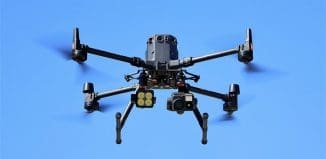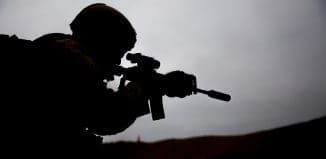New Simulator for Better Decision Making in the Use of Force
This post is also available in:  עברית (Hebrew)
עברית (Hebrew)
Helping law-enforcement officers make better decisions when deciding when to use force has become increasingly important in light of the public debate on the appropriate use of force.
VirTra Inc. offers solutions for training police and military personnel around the world in the use of force.
VirTra creates simulators using small theaters encircling the trainee with screens. Actors are employed to play out a variety of on-screen scenarios. The weapons are real, but rather than ammunition, they are loaded with a realistic kickback device. When the user “shoots” a suspect, the suspect collapses in a pool of blood. If the trainee misses, the suspect shoots back. According to azcentral.com, VirTra makes a stun gun-like device called Threat-Fire that clips to the user’s belt. It has various settings on the size of jolt it delivers to simulate some of the stress associated with the threat of being shot or stabbed. The device can deliver 80,000 volts for 0.2 to 2.5 seconds, to simulate a fear response and some pain and stress.
VirTra has developed simulators used by law-enforcement officers across the the US, including Customs and Border Protection, the Secret Service and the U.S. Department of State. The simulators are used in 19 countries, including Australia.
In addition to firearms, the simulators can provide practice with non-lethal weapons like Tasers and rifles that shoot bean bags.
VirTra has a variety of scenarios that can be used for training, from traffic stops to hostage situations in war zones. Customers can request custom content and, using VirTra’s platform, can create their own so it can train people on specific scenarios or particularly troublesome locations in a city.
VirTra simulators allow trainers to evaluate how well officers use verbal commands and attempt to de-escalate a situation. The person operating the simulator can prompt different outcomes where the actors on screen either surrender, run or attack.
The simulators also prevent what VirTra officials call “training scars,” where officers practice standing still and shooting at moving targets.
In a real gunbattle, officers need to seek cover while they return fire, and the simulators give them the opportunity to evaluate their surroundings to look for cover, not just what is downrange.
After a simulation is run, the trainees can review the video, which records when they fired their weapons, what was visible on the suspects at the time, and what the officers said leading up to the shooting. VirTra officials make trainees write a post-event report when they run the training.
Many of the employees are former police or military. The company also hires subject-matter experts who have either been in live-fire situations in law enforcement or in war zones, and uses their input to develop simulations.
The simulators can cost $200,000 to $300,000 depending on the features included. The company makes various models, but the most expensive unit uses five screens to create a 300-degree field of view and surround sound to mimic voices or noises from different directions.






























